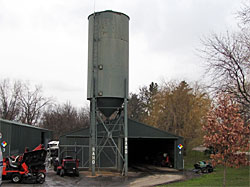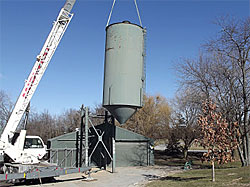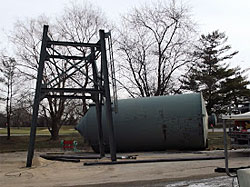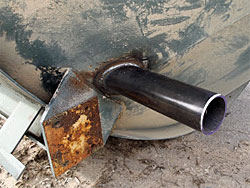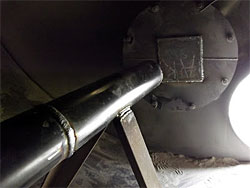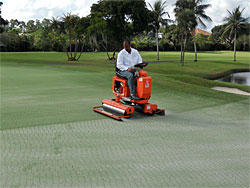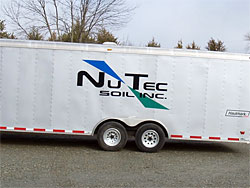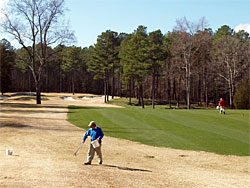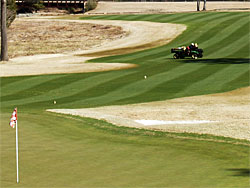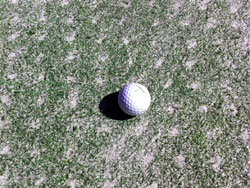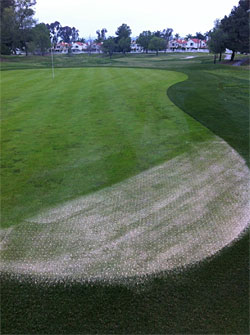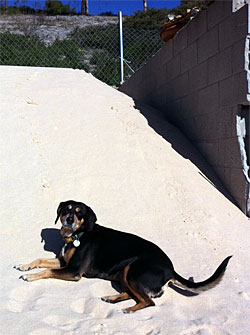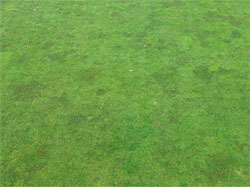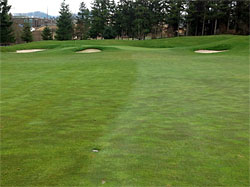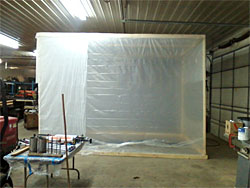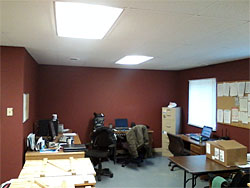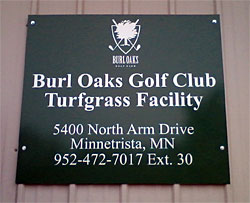|
 |
March 19, 2013 |
|
Sand Silo... Scott Pavalko, Cog Hill Golf & Country Club, Lemont, IL:
 "Those of you who have played the 18th hole of Dubsdread have most likely have noticed the proximity of our maintenance facility to the 18th fairway. This cluster of green buildings is "central command" for all maintenance that occurs on the golf course. In peak season, we have over 75 employees working out of this facility.
|
 |
|
Green venting, green sand... Tony Nysse, Pine Tree Golf Club, Boynton Beach, FL:
 "On Monday, February 11th, we will be venting the putting greens, as we have in the previous months. This venting will get us past the Men's Invitational in the middle of March. With all the golf that we have experienced over the last 6 weeks, the greens are ready to be opened up and breathe. We will roll the greens in 2 directions immediately after the venting and they will be smooth prior to play starting at 10am.
Visit Tony's blog at pinetreegm.blogspot.com. |
 |
|
Balancing the soils for the best conditions... Scott Mauldin, The Foundry Golf Club, Powhatan, VA:
 "Nutec Soils is here to perform the soil testing and layout the GPS setting for the precision fertility program First, the sampling will occur with in a 30 foot circle several times on each hole. For example, we had 39 soil sample bags collected on hole number one. Second, each bag is placed on the ground until Marcus comes by and plugs in the GPS coordinates. Once the samples come back from testing Nutec will use that data in conjunction with the GPS coordinates. This will show us precisely which nutrients are deficient or too high. We will use this information to precisely build a program for each hole. Nutec has specialized equipment that will allow him to apply the precise amount of product where it is needed.
|
 |
|
Aerification is Monday, March 11... Jim Alwine, Bernardo Heights Country Club, San Diego, CA:
 "So, what's the most important date of the year for Bernardo Heights Country Club? I'll give you a few hints: It coincides with the first full day of daylight savings time, it involves poking a lot of holes in the ground, and most golfers don't care for this day at all. Yes, it's this Monday when we get to open up the greens with some 3/8 inch tines. Out with the bad and in with the good. |
 |
|
What are those Purple Spots? Ryan Gordon, TPC Snoqualmie Ridge, Snoqualmie, WA:
 "First, let me say, no... Harold and his purple crayon did not pay a visit to our golf course. Remember this classic book from your childhood? I read this to my three-year old son Knox at bedtime last night and in the book, everything is purple. Kind of like those funny looking spots on our greens and fairways.
Typically, our turf is green thanks to a pigment inside the plant called chlorophyll. However, when we experience fluctuating weather patterns, another pigment called anthocyanin temporarily replaces cholorophyll as the main pigment in the turf. This pigment is found in many other colorful plants throughout the plant kingdom such as the purple petunias that we hang around the clubhouse in the summertime or the red geraniums on your back patio.
This biological phenomenon does not harm our turf and is simply a part of Mother Nature's quirks. It is also interesting to note that these spots tend to appear with stronger intensity on our more exposed areas which makes sense because these areas experience the greatest temperature fluctuations. (Think wide-open North end putting green versus sheltered #2 green). Once the weather patterns stabilize towards May and June, chlorophyll will once again become the main pigment in our turf." |
 |
|
Paint, paint, paint... Mike Ford, asst supt, Burl Oaks Golf Club, Minnetrista, MN:
"In the few weeks since the last post we have engineered the design for the new cooler stands. After constructing a paint booth, we are now in the process of painting the metal components of the cooler stands along with some of our metal tools such as cup cutters, cup setters and ball mark repair tools. |
 |
|
Expected Hatch Date is Quickly Approaching... Paul L. Carter, CGCS, Bear Trace at Harrison Bay, Harrison, TN:
 "March 17th is quickly approaching. What is so special about March 17th you might ask? Well it is the expected date for the much anticipated hatching of the first egg Eloise laid on February 10th. Hopefully a few days later little brother or sister will emerge from the second egg which was laid on February 13. 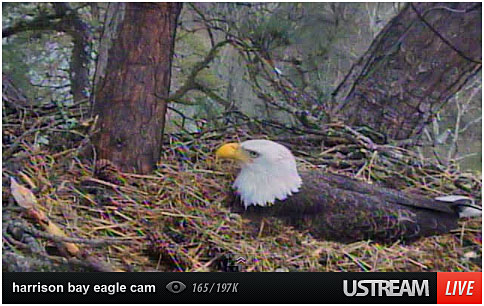 Visit the Harrison Bay Eagle Cam site at http://www.harrisonbayeaglecam.org/. |
 |
|
About our Blog Aggregator: Many superintendents are now hosting private blogs to better communicate with their golfers and/or members. Beyond local weather and course conditions, there is a great deal of information about projects, methodologies and techniques that would be of value to other superintendents — hence our Turf Blog Aggregator. As every blogger struggles occasionally with content, we also include posts intended to educate golfers about turf maintenance for others to use as a template for their own blogs. Miss any previous issues of TBA? You can find them all here. |
